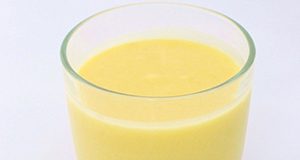A pureed diet may be recommended for individuals with swallowing problems; however, it can be challenging for those with a puréed diet to receive adequate protein, fiber, vitamins, and minerals. This 4-page document provides recipes made with puréed lentils, offering desserts that are both tasty and nutrient-dense. Written by Wendy J. Dahl and Alison O’Donoughue and published by the UF/IFAS Department of Food Science and Human Nutrition, March 2018.
http://edis.ifas.ufl.edu/fs306
Tag: Pureed Food
Alimentos en Pure: Prueba de Textura con la Prueba de Desplome
This is the Spanish version of FS276 Pureed Foods: Texture Testing with the Slump Test. For individuals with dysphagia, the texture of puréed foods is extremely important. If the puréed foods are either too thick or too thin, it can make it more difficult to swallow. The slump test is a quick, easy, and inexpensive way to assess the texture of foods. This four-page fact sheet describes the slump test, how to perform a slump test, and how the slump test can be used to evaluate the texture of puréed foods. Written by Wendy J. Dahl, and published by the Food Science and Human Nutrition Department.
http://edis.ifas.ufl.edu/fs288
Pureed Food: Guide to Quick Meals
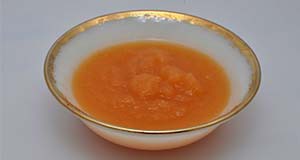
Puréed foods are an important source of nutrients for those who have problems chewing or swallowing. A puréed food is any item that has been processed into a smooth and uniform texture and therefore does not require chewing. Purées can be made from most foods and this guide provides some tips for fast and easy to prepare puréed foods. This four-page fact sheet covers the preparation of puréed foods from canned vegetables and fruits; beans, peas, and lentils; and mixed dishes. It also provides a useful example meal plan. Written by Wendy J. Dahl, and published by the Food Science and Human Nutrition Department.
http://edis.ifas.ufl.edu/fs277
Pureed Foods: Texture Testing with the Slump Test

For individuals with dysphagia, the texture of puréed foods is extremely important. If the puréed foods are either too thick or too thin, it can make it more difficult to swallow. The slump test is a quick, easy, and inexpensive way to assess the texture of foods. This four-page fact sheet describes the slump test, how to perform a slump test, and how the slump test can be used to evaluate the texture of puréed foods. Written by Wendy J. Dahl, and published by the Food Science and Human Nutrition Department.
http://edis.ifas.ufl.edu/fs276
Los alimentos en pure y la fibra
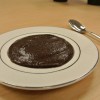 La fibra es importante para la buena salud. El consumo inadecuado de fibra puede conducir al estreñimiento y a otros problemas gastrointestinales. Las dietas altas en fibra pueden ayudar a reducir el colesterol y la glucosa en la sangre, lo que reduce el riesgo de las enfermedades del corazón. Aunque la fibra se encuentra en todos los alimentos de origen vegetal como las frutas, los vegetales, los granos, las nueces y las semillas, la mayoría de las personas no consumen lo suficiente.The English version of this document is FSHN12-16/FS209 Puréed Foods and Fiber. This 4-page fact sheet was written by Wendy J. Dahl, and published by the UF Department of Food Science and Human Nutrition, December 2013.
La fibra es importante para la buena salud. El consumo inadecuado de fibra puede conducir al estreñimiento y a otros problemas gastrointestinales. Las dietas altas en fibra pueden ayudar a reducir el colesterol y la glucosa en la sangre, lo que reduce el riesgo de las enfermedades del corazón. Aunque la fibra se encuentra en todos los alimentos de origen vegetal como las frutas, los vegetales, los granos, las nueces y las semillas, la mayoría de las personas no consumen lo suficiente.The English version of this document is FSHN12-16/FS209 Puréed Foods and Fiber. This 4-page fact sheet was written by Wendy J. Dahl, and published by the UF Department of Food Science and Human Nutrition, December 2013.
http://edis.ifas.ufl.edu/fs238
Pureed Foods: High Protein (FSHN1215/FS208)
 Protein is an important nutrient. Many older adults do not consume enough of this vital nutrient, crucial to overall health and well-being. For those with dysphagia and on a puréed diet, consuming sufficient protein is even more difficult. While a texture-modified diet may not be the diet of choice, the goal is to make it as appealing as possible so that the person consuming the purées can experience a better quality of life. This 4-page fact sheet was written by Jamila R. Lepore and Wendy J. Dahl, and published by the UF Department of Food Science and Human Nutrition, March 2013.
Protein is an important nutrient. Many older adults do not consume enough of this vital nutrient, crucial to overall health and well-being. For those with dysphagia and on a puréed diet, consuming sufficient protein is even more difficult. While a texture-modified diet may not be the diet of choice, the goal is to make it as appealing as possible so that the person consuming the purées can experience a better quality of life. This 4-page fact sheet was written by Jamila R. Lepore and Wendy J. Dahl, and published by the UF Department of Food Science and Human Nutrition, March 2013.
http://edis.ifas.ufl.edu/fs208
Preparation of Pureed Foods (FSHN1212/FS205)
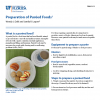 A puréed food is a food item that has been blended, mixed, or processed into a smooth and uniform texture. Examples of foods with a purée consistency include applesauce, pumpkin pie filling, and hummus. Puréed foods may be necessary for people with chewing and/or swallowing problems. For those requiring a puréed diet, it is important to provide a variety of foods. Almost any food can be puréed. However, some puréed foods may be much more acceptable than others. This 4-page fact sheet was written by Wendy J. Dahl and Jamila R. Lepore, and published by the UF Department of Food Science and Human Nutrition, March 2013.
A puréed food is a food item that has been blended, mixed, or processed into a smooth and uniform texture. Examples of foods with a purée consistency include applesauce, pumpkin pie filling, and hummus. Puréed foods may be necessary for people with chewing and/or swallowing problems. For those requiring a puréed diet, it is important to provide a variety of foods. Almost any food can be puréed. However, some puréed foods may be much more acceptable than others. This 4-page fact sheet was written by Wendy J. Dahl and Jamila R. Lepore, and published by the UF Department of Food Science and Human Nutrition, March 2013.
http://edis.ifas.ufl.edu/fs205
Pureed Foods, Thickened Beverages, and Water Needs (FSHN1301/FS218)
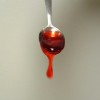 Thickened liquids are often recommended for individuals who have problems swallowing thin liquids. Juice, milk, water, and even coffee can be thickened. Pre-thickened beverages are available commercially, or they can be prepared with various commercial thickeners. This 4-page fact sheet describes various consistencies of thickness, how much water various puréed foods contribute. Written by Wendy J. Dahl, and published by the UF Department of Food Science and Human Nutrition, March 2013.
Thickened liquids are often recommended for individuals who have problems swallowing thin liquids. Juice, milk, water, and even coffee can be thickened. Pre-thickened beverages are available commercially, or they can be prepared with various commercial thickeners. This 4-page fact sheet describes various consistencies of thickness, how much water various puréed foods contribute. Written by Wendy J. Dahl, and published by the UF Department of Food Science and Human Nutrition, March 2013.
http://edis.ifas.ufl.edu/fs218
Pureed Foods and Fiber (FSHN12-16/FS209)
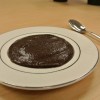 People with swallowing problems who require a puréed diet may not meet their recommended intake of fiber. But puréed diets can be planned to achieve fiber recommendations by choosing higher-fiber puréed foods often. And a variety of fiber ingredients are available that can be added to puréed foods. This 4-page fact sheet was written by Wendy J. Dahl, and published by the UF Department of Food Science and Human Nutrition, January 2013.
People with swallowing problems who require a puréed diet may not meet their recommended intake of fiber. But puréed diets can be planned to achieve fiber recommendations by choosing higher-fiber puréed foods often. And a variety of fiber ingredients are available that can be added to puréed foods. This 4-page fact sheet was written by Wendy J. Dahl, and published by the UF Department of Food Science and Human Nutrition, January 2013.
http://edis.ifas.ufl.edu/fs209
Sensory Acceptability of Pureed Foods (FSHN1213/FS206)
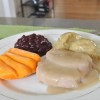 It is important that we enjoy the food we eat. This makes for a better quality of life. This is no different for those people needing to be on puréed diets due to swallowing problems. And just like you wouldn’t want to serve guests a recipe without trying it first, you don’t want to serve a puréed food without knowing that it is appealing. This 5-page fact sheet was written by Jamila R. Lepore and Wendy J. Dahl, and published by the UF Department of Food Science and Human Nutrition, November 2012.
It is important that we enjoy the food we eat. This makes for a better quality of life. This is no different for those people needing to be on puréed diets due to swallowing problems. And just like you wouldn’t want to serve guests a recipe without trying it first, you don’t want to serve a puréed food without knowing that it is appealing. This 5-page fact sheet was written by Jamila R. Lepore and Wendy J. Dahl, and published by the UF Department of Food Science and Human Nutrition, November 2012.
http://edis.ifas.ufl.edu/fs206
La aceptabilidad sensorial de los alimentos en pure (FSHN1213S/FS216)
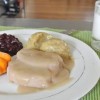 La evaluación sensorial es el proceso en el que utilizamos nuestros sentidos (gusto, olfato, tacto, vista) y su aplicación para la determinación de la aceptabilidad de los alimentos. ¡Simplemente, se están evaluando los alimentos para asegurarse que se ven, huelen y saben delicioso! This 6-page fact sheet was written by Jamila R. Lepore and Wendy J. Dahl, and published by the UF Department of Food Science and Human Nutrition, December 2012.
La evaluación sensorial es el proceso en el que utilizamos nuestros sentidos (gusto, olfato, tacto, vista) y su aplicación para la determinación de la aceptabilidad de los alimentos. ¡Simplemente, se están evaluando los alimentos para asegurarse que se ven, huelen y saben delicioso! This 6-page fact sheet was written by Jamila R. Lepore and Wendy J. Dahl, and published by the UF Department of Food Science and Human Nutrition, December 2012.
http://edis.ifas.ufl.edu/fs216
Spoon Test for Pureed Food (FSHN1211/FS204)
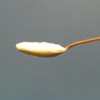 Puréed foods prepared for people with swallowing problems should meet the recommended textural guidelines. Proper texture is the priority when creating purées. A puréed food should have a uniform texture that is “spoon thick” and does not require chewing. It should not be too dry, sticky, lumpy, or thin. Adjustments in thickness may be made according to the individual’s specific needs. This 2-page fact sheet was written by Wendy J. Dahl and Jamila R. Frazier, and published by the UF Department of Food Science and Human Nutrition, November 2012.
Puréed foods prepared for people with swallowing problems should meet the recommended textural guidelines. Proper texture is the priority when creating purées. A puréed food should have a uniform texture that is “spoon thick” and does not require chewing. It should not be too dry, sticky, lumpy, or thin. Adjustments in thickness may be made according to the individual’s specific needs. This 2-page fact sheet was written by Wendy J. Dahl and Jamila R. Frazier, and published by the UF Department of Food Science and Human Nutrition, November 2012.
http://edis.ifas.ufl.edu/fs204
